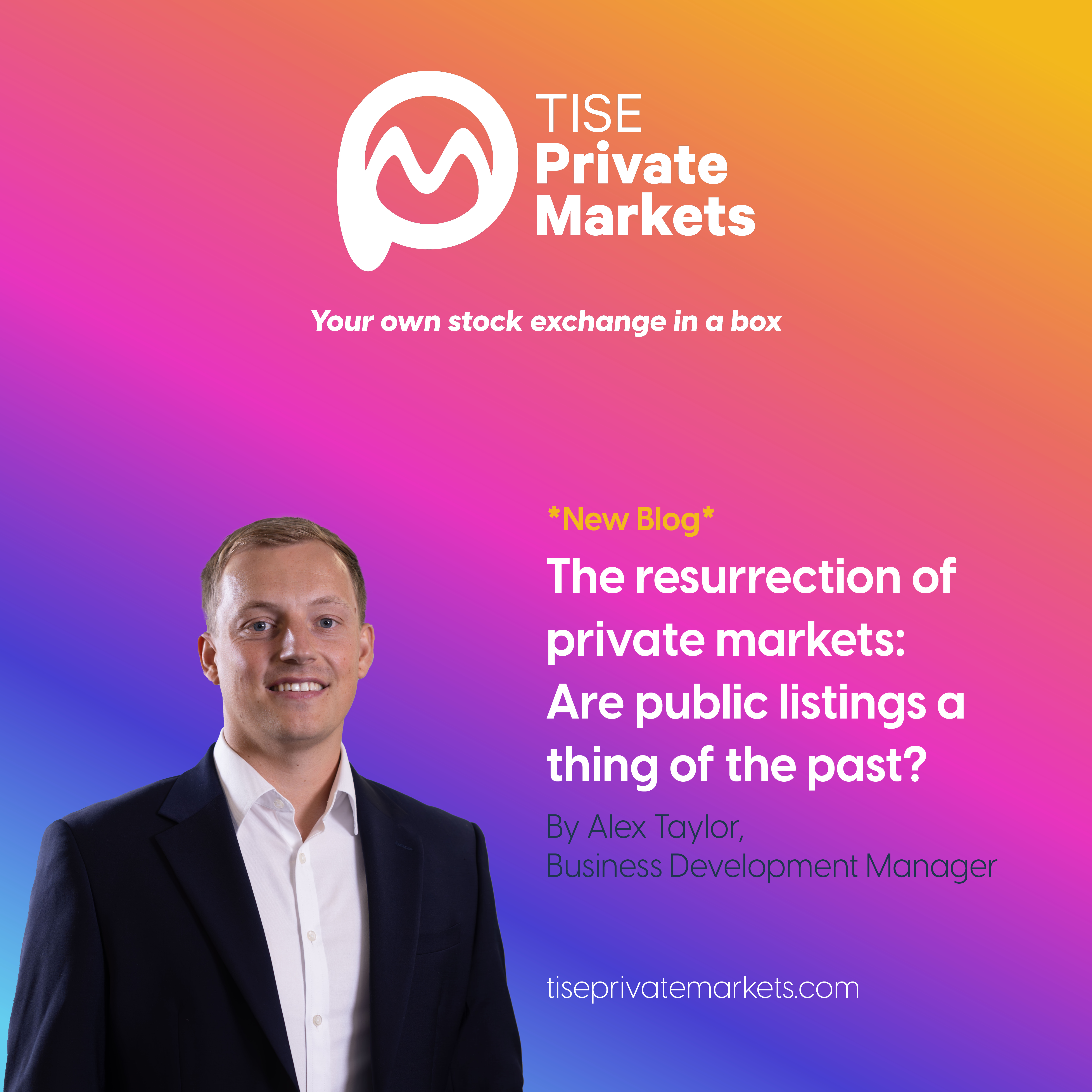Alex Taylor, Business Development Manager at The International Stock Exchange (TISE), takes a closer look at secondary markets and how the landscape is evolving with the launch of new initiatives providing private companies with access to better share trading facilities.
Over the last 6-7 years there has been a significant shift of appetite in the favour of secondary transactions. This is a transaction in which securities are traded after they are first issued in a primary market, allowing investors to buy and sell securities (including shares) in which they are already invested. Secondaries are a useful tool that can provide a way for shareholders to take control of liquidity instead of rushing to IPO, which can be costly and take up a large chunk of management’s time.
It is well known that companies in Europe and the US are staying private for longer, with the median time from initial VC funding to IPO growing from 3.1 to 6 years from 2000 to 2021 in the US (Statista). Private companies are now looking for new ways to improve liquidity and utilise equity. The popularity of secondary market transactions is increasing year on year, with volume rising from $3.2m in 2017 to $20.4m in 2021 (Nasdaq).
"Secondaries are a useful tool that can provide a way for shareholders to take control of liquidity instead of rushing to IPO..."
There is also clearly a shift in the mindset of publicly quoted companies with over 40 companies leaving AIM during 2023. There are many reasons for the surge in delists, including regulatory burden, management time to maintain listing, lack of liquidity, and small dips in performance materially affecting share price. One of the main reasons for companies delisting from AIM is cost. Companies are paying upwards of £150,000 p.a. when all fees (including brokers, auditors etc) are factored in and must pay at least 3 times (£450,000) this to IPO.
How do secondaries work and what are the benefits of a secondary market?
Private companies running a dedicated secondary market through an innovative platform at regular intervals can be beneficial in the following ways:
- Greater shareholder participation
- Concentration of liquidity
- A share price discovery mechanism
- A more accurate, less volatile share price
- Reduced administration burden than a public listing (no forced investor communications and reporting, auto updating of share registers etc)
- Substantial cost saving in comparison to listing on public markets (removing intermediaries and layered fees such as admission & further issue fees)
- Remaining in /regaining control. Shareholders of the company’s choice can be invited into the market
The introduction of platforms such as TISE's private markets offering, TISE Private Markets, and the UK's proposals to introduce a Private Intermittent Securities and Exchange System (PICSES) can provide competition to a public listing/quoting, or at the very least provide an incubator for private companies building to IPO.
"The introduction of platforms such as TISE's private markets offering, TISE Private Markets.... can provide competition to a public listing/quoting..."
TISE Private Markets launched last year with its first client, Blue Diamond Limited. Blue Diamond is the leading garden centre group based in the UK and Channel Islands, and a market capitalisation of A. £170M. The company was looking for a better way to trade their shares but without the cost, regulatory burden and loss of control that a public listing can entail. Since their launch on TISE Private Markets they have been running monthly auctions with an increase in (approved) investor participation, growth in transaction volumes and an increase in the share price. Isn’t this what it is all about for the owners of a company?
You can view the Blue Diamond case study, or alternatively, if you can request a demo of the TISE Private Markets platform.

Alex Taylor
Business Development Lead

